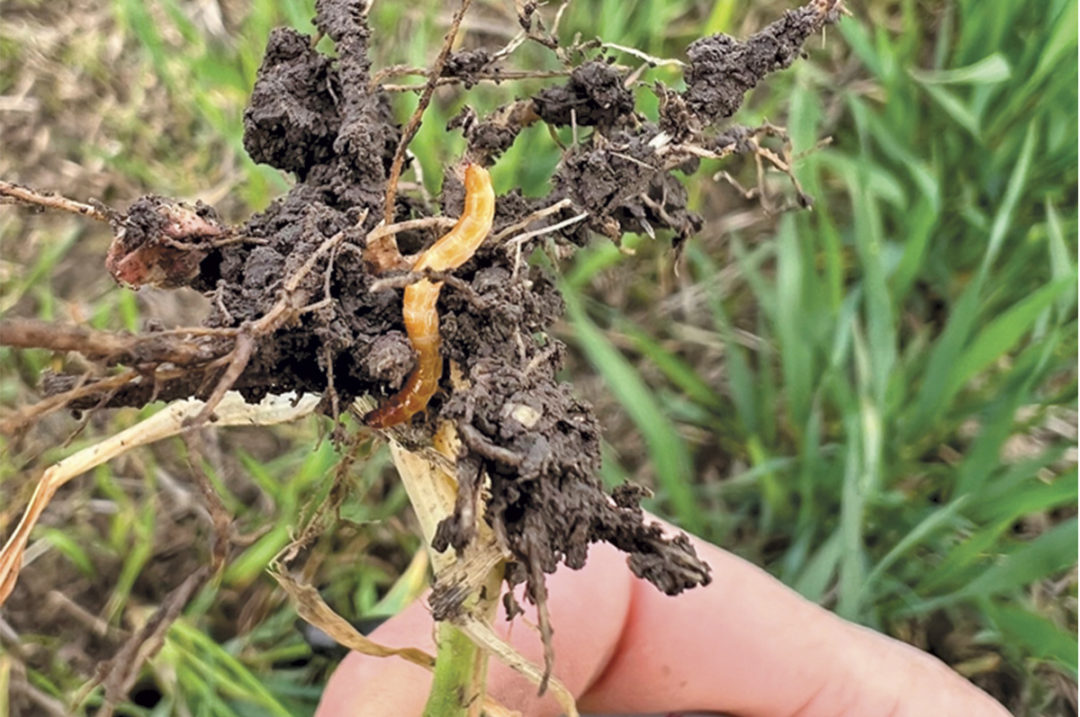What is seed treatment? When asked of the older generation of growers, the answer was, “That red stuff they put on the seed.” While not wrong, there is actually more science behind it than throwing some snake oil on a seed and making wild claims. Seed treatments of years past were very broad spectrum against a whole swath of diseases. While this was somewhat effective, it is nothing like the prescriptions sold today.
Seed treatments of today are very targeted against the diseases prevalent in Idaho soil. Some of the prescriptions (often called custom blends) can consist of upward of nine individual active ingredients. Most growers in Idaho are aware of pythium, rhizoctonia and fusarium. So, why would a prescription need nine different active ingredients? Remember my earlier statement – these active ingredients are very targeted to a specific disease, so we put multiple modes of action in the prescription to help mitigate resistance.
An example of a commonly used active ingredient that goes across a broad spectrum of crops would be mefenoxam. The active ingredient mefenoxam has been used at a low-label rate for years. This active ingredient has been the main leader against pythium, but because of the low-use rate, as well as the use of the active ingredient from crop to crop, we now are seeing metalaxyl/mefenoxam-resistant pythium slowly move into Idaho from neighboring states. This is a huge concern for our growers. The mutation of the pythium species is something we have been concerned about for years. Knowing this issue, manufacturers have now registered products that directly combat the resistant pythium.
Addressing wireworm challenges
Another huge issue facing Idaho growers is wireworms, but most growers don’t even know they have wireworms in their fields. Wireworms can be a small problem or an all-encompassing problem for some growers. Not all fields will have wireworms prevalent; this could be based on crop rotations and the products used in the production of that crop.
For instance, a potato field is a very input-demanding crop. Some of those inputs are directly related to the eradication of wireworms. But, what about the growers who do not have potatoes in their rotation? These growers have been left to use the products that were available. Thiamethoxam and imidacloprid are active ingredients that have been widely adopted to help combat wireworms. Although these tools were helping to decrease the damage, they were not really the answer for controlling the issue. They were just the best tool we had at the time. This does not mean they are not important tools; thiamethoxam and imidacloprid are extremely useful for the control of aphids that spread diseases such as barley yellow dwarf virus (BYDV).
Because seed treatment is a science, manufacturers have been working on answers to the wireworm issue for years. Teraxxa, which carries the active ingredient broflanilide, is currently the only registered active ingredient that can be used on cereal crops. While that manufacturer is first to the market with a solution, other manufacturers are working on bringing options to the market, such as plinazolin. Plinazolin has been tested thoroughly as well and will seek registration in the summer of 2024. Although there are other products in the development phase that are directed to the control of wireworms, these are the two that are readily available or will be readily available to Idaho growers in the 2024 planting season.
Wireworm life cycles have been extensively researched. It is found that wireworms have a life cycle of three to five years from egg to adult. So what does this mean for a grower? Protection for one planting cycle simply will not be enough to control wireworms. Broflanilide does have a mortality of 80%, but that is only for actively feeding wireworms. So, due to the life cycle of a wireworm, you may only control one generation of the wireworm but only 80% of those that are feeding. The other 20% will grow and reproduce, starting the process over again, and so continues with the next three to five generations. Broflanilide and other products like it are not a miracle cure by any means. They are simply just tools that are available to Idaho growers to help control the loss of yield.
In conclusion, seed treatments have always been a low-cost input to help control many of the diseases our soils harbor. While they are not season-long protection, they do serve the purpose of getting the crop out of the ground and into the sun where the plant has a better ability to combat some of these diseases. While some growers still see seed treatments as “just another expense,” they fail to see the additional benefits seed treatments can offer. These benefits include, but are not limited to even stand establishment, faster and stronger root development (which leads to better nutrient uptake), faster row closure (which can help in the control of weeds) and higher yields in fields that have disease presence.





.jpg?t=1687979285&width=640)


